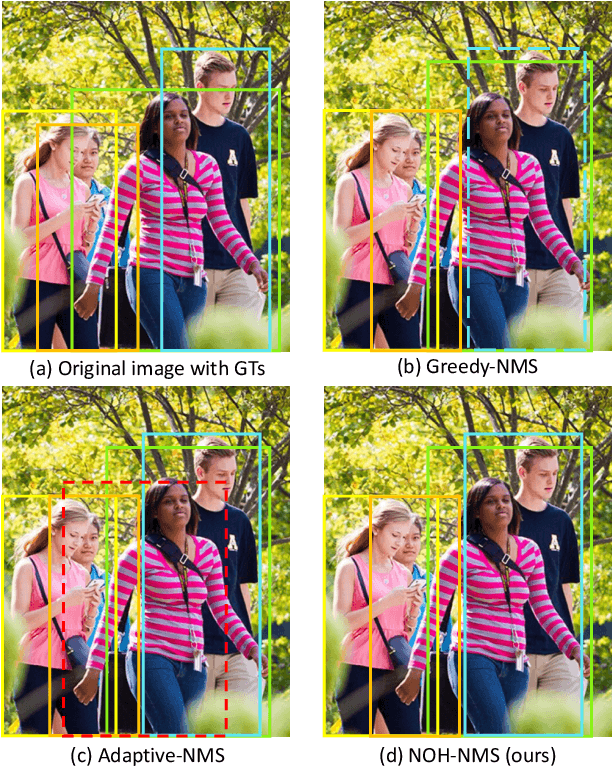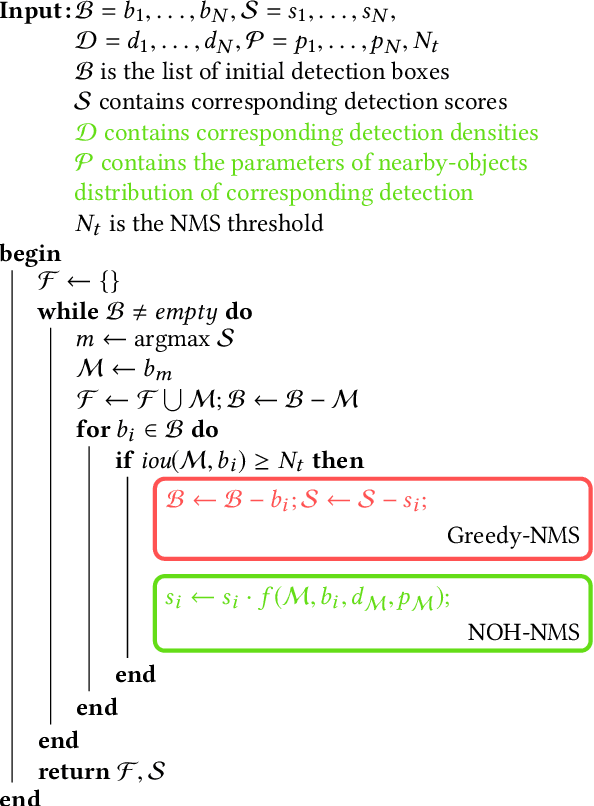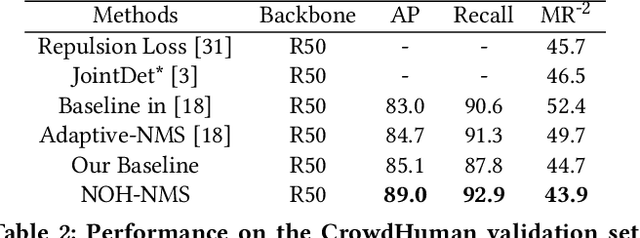NOH-NMS: Improving Pedestrian Detection by Nearby Objects Hallucination
Paper and Code
Jul 27, 2020



Greedy-NMS inherently raises a dilemma, where a lower NMS threshold will potentially lead to a lower recall rate and a higher threshold introduces more false positives. This problem is more severe in pedestrian detection because the instance density varies more intensively. However, previous works on NMS don't consider or vaguely consider the factor of the existent of nearby pedestrians. Thus, we propose Nearby Objects Hallucinator (NOH), which pinpoints the objects nearby each proposal with a Gaussian distribution, together with NOH-NMS, which dynamically eases the suppression for the space that might contain other objects with a high likelihood. Compared to Greedy-NMS, our method, as the state-of-the-art, improves by $3.9\%$ AP, $5.1\%$ Recall, and $0.8\%$ $\text{MR}^{-2}$ on CrowdHuman to $89.0\%$ AP and $92.9\%$ Recall, and $43.9\%$ $\text{MR}^{-2}$ respectively.
 Add to Chrome
Add to Chrome Add to Firefox
Add to Firefox Add to Edge
Add to Edge